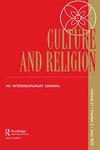Descent from the peak: mystical navigations of paradox and trauma on the down-climb
IF 0.5
0 RELIGION
引用次数: 0
Abstract
ABSTRACT The literature on ‘mountain mysticism’ includes a wide array of interpretations: Reductively, mystical states experienced on mountains may be viewed as neurological or psychological epiphenomena. Anthropomorphised as mystical agents themselves, the mountain is seen as capable of engendering non-ordinary awareness. This article makes space for interpretations falling outside of or combining such constructivist and universalised interpretations by first examining what ontological interpolations may be available after ‘the peak has been reached.’ I track the mystic’s descent ‘back’ to ordinary consciousness as a pivotal determinative moment in the narrative construction of mystical noesis. I consider three examples of 19th and 20th century nature mysticisms (naturalist John Muir, Vedantic sage Ramana Maharshi, journalist Rob Schultheis) to illustrate my assertion that it is the mystic’s grappling with the paradox inherent in the ontological trauma of descent which performs the pivotal negotiation between the collapsed boundaries of subject/object or self/Other that characterizes mystical experience. I suggest further that we look to this narrative grappling as inevitably determining the content of the experience of noesis itself. Rather than reasserting a radical constructivism, I point more specifically to ‘descent’ as one juncture in which a remarkable ontological agency directly engages with the mystic’s moment of self-construal.从顶峰下降:神秘的悖论和下行创伤的导航
关于“高山神秘主义”的文献包括一系列广泛的解释:简化地说,在山上经历的神秘状态可能被视为神经学或心理学的副现象。这座山被拟人化为神秘的代理人,被视为能够产生不寻常的意识。本文首先考察了在达到顶峰后可能存在的本体论插值,从而为超出或结合这种建构主义和普遍化解释的解释留出了空间。我追踪神秘主义者的“回归”到普通意识的过程,作为神秘论的叙事结构中的关键决定性时刻。我考虑了19世纪和20世纪自然神秘主义的三个例子(博物学家John Muir,吠陀圣哲Ramana Maharshi,记者Rob Schultheis)来说明我的断言,这是神秘主义者与血统本体论创伤中固有的悖论的斗争,它在主体/客体或自我/他者的崩溃边界之间进行了关键的谈判,这是神秘体验的特征。我进一步建议,我们将这种叙事角力视为不可避免地决定了noesis本身经验的内容。与其重申激进的建构主义,我更具体地指出“下降”是一个结合点,在这个结合点上,一个非凡的本体论机构直接与神秘主义者的自我建构时刻联系在一起。
本文章由计算机程序翻译,如有差异,请以英文原文为准。
求助全文
约1分钟内获得全文
求助全文

 求助内容:
求助内容: 应助结果提醒方式:
应助结果提醒方式:


